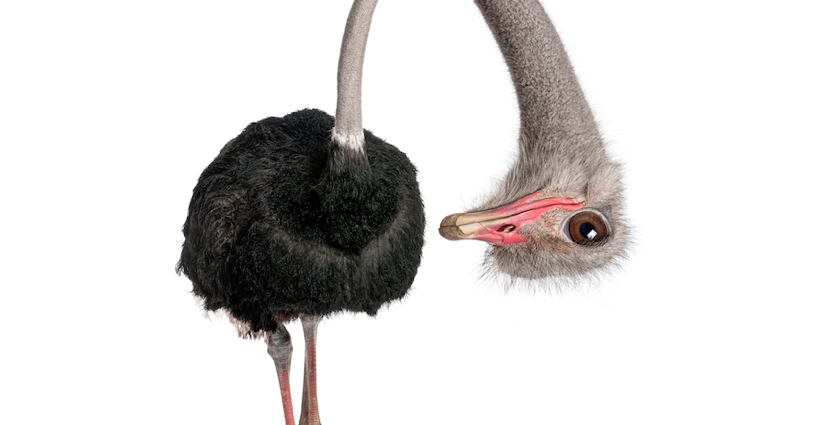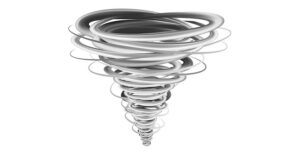Could Bird Brains Shed Light on Sleep Disorders?
Study Reveals Key Insights in Ostrich Sleep Patterns
Table of Contents

A new study of bird brains may help clarify what happens in the brain during sleep and pave the way for future research on sleep disorders and neurological problems in humans.
The recent study, published in The Journal of Comparative Neurology, looked at differences in brain activity between different bird species. Specifically, the study compared birds of flight — including a Congo gray parrot, a Timneh gray parrot, and a pied crow — to flightless species, namely an ostrich and an emu.
The researchers, located across four continents, zeroed in on the presence or absence of cholinergic neurons in the hypothalamus of the birds’ brains. These nerve cells, which produce the neurotransmitter acetylcholine, or ACh, play a key role in the different stages of sleep.
Notably, the study found, emus and ostriches lack cholinergic neurons in their hypothalamus, an area of the brain involved in regulating the sleep-wake cycle in humans and other animals. By contrast, the researchers found that the parrots and the crow — like humans — have hypothalamic cholinergic neurons.
While there’s a lack of comprehensive research on emu sleep, the recent study’s findings may explain why ostriches have such unusual sleep patterns compared with humans.
How Do Ostriches Sleep?
Contrary to popular belief, ostriches do not sleep with their heads buried in the sand. They do, however, have some distinctive sleep traits.
All sleep stages can be broadly categorized into rapid eye movement (REM) sleep and non-rapid eye movement (NREM) sleep. Most animals, including humans, generally only experience one sleep stage at a time.
In the 1990s, Paul Manger, a South Africa-based professor and researcher, discovered that platypuses and other egg-laying mammals experience REM and NREM sleep in different parts of the brain at the same time. Subsequent research found that ostriches, like egg-laying mammals, can also simultaneously experience slow-wave sleep and REM sleep.
The recent study, co-authored by Manger, expands on the previous ostrich research and ties the sleep similarities between ostriches and egg-laying mammals specifically to the absence of cholinergic neurons in the hypothalamus.
What Does This Mean for Human Sleep?
Research focused on cholinergic neuron dysfunction has produced important insights into understanding and treating neurological and psychiatric disorders, including Parkinson’s disease and schizophrenia.
Manger believes that further research into the complexities of bird brains could lead to a better understanding of human sleep and sleep disorders.
“The cholinergic system acts as a connectivity axis throughout the brain,” Manger told the online science journal Nature Africa. “Disruptions in this system can lead to the fragmentation of global brain states, and potentially contribute to sleep disorders and other neurological conditions.”
Got a hot tip? Pitch us your story idea, share your expertise with SleepFoundation.org, or let us know about your sleep experiences right here.
References
7 Sources
-
Mazengenya, P., Lesku, J. A., Rattenborg, N. C., & Manger, P. R. (2024). Apparent absence of hypothalamic cholinergic neurons in the common ostrich and emu: Implications for global brain states during sleep. Journal of Comparative Neurology, 532(2), e25587.
https://pubmed.ncbi.nlm.nih.gov/38335048/ -
Ahmed, N. Y., Knowles, R., & Dehorter, N. (2019). New insights into cholinergic neuron diversity. Frontiers in Molecular Neuroscience, 12, 204.
https://pubmed.ncbi.nlm.nih.gov/31551706/ -
Aulsebrook, A. E., Johnsson, R. D., & Lesku, J. A. (2021). Light, sleep and performance in diurnal birds. Clocks & Sleep, 3(1), 115–131.
https://pubmed.ncbi.nlm.nih.gov/33525352/ -
Lyamin, O. I., Kibalnikov, A. S., & Siegel, J. M. (2020). Sleep in ostrich chicks (Struthio camelus). Sleep, 44(5).
https://pubmed.ncbi.nlm.nih.gov/33249508/ -
Kirsch, D. (2023, July 25). Stages and architecture of normal sleep. In S. M. Harding (Ed.). UpToDate., Retrieved April 12, 2024, from
https://www.uptodate.com/contents/stages-and-architecture-of-normal-sleep -
Biyela, S. (2024, April 8). Bird brains could hold the secrets to better sleep. Nature Africa.
https://www.nature.com/articles/d44148-024-00118-6 -
Lesku, J. A., Meyer, L. C. R., Fuller, A., Maloney, S. K., Dell’Omo, G., Vyssotski, A. L., & Rattenborg, N. C. (2011). Ostriches sleep like platypuses. PLOS One, 6(8), e23203.
https://pubmed.ncbi.nlm.nih.gov/21887239/













































































































































